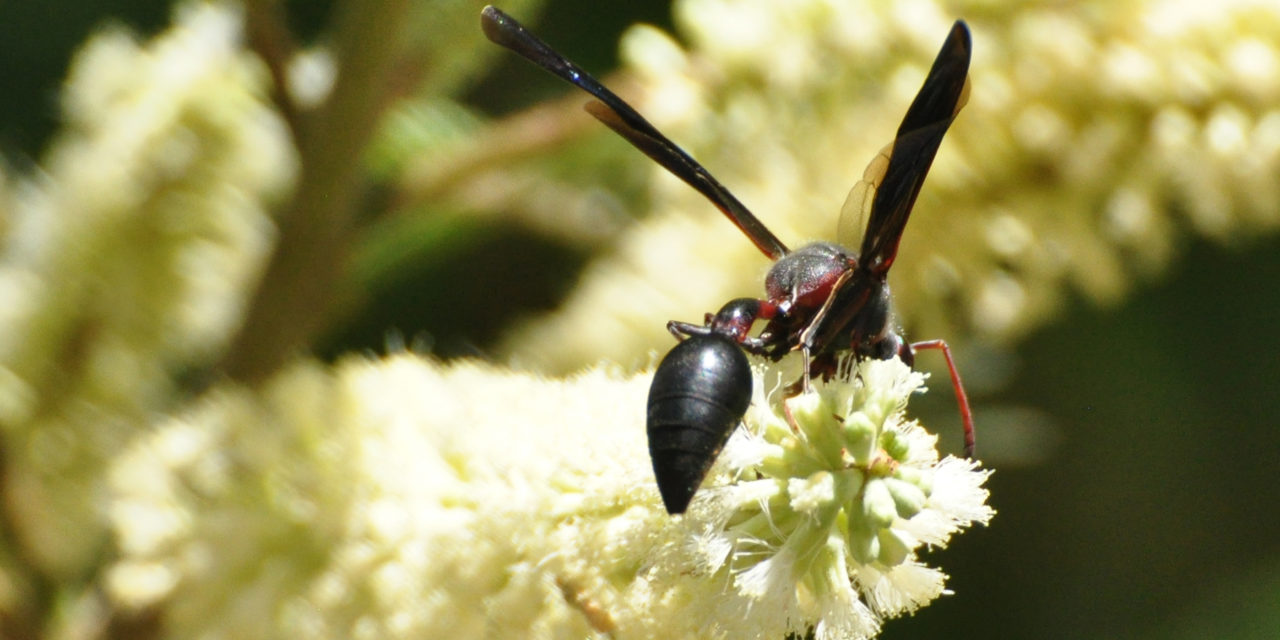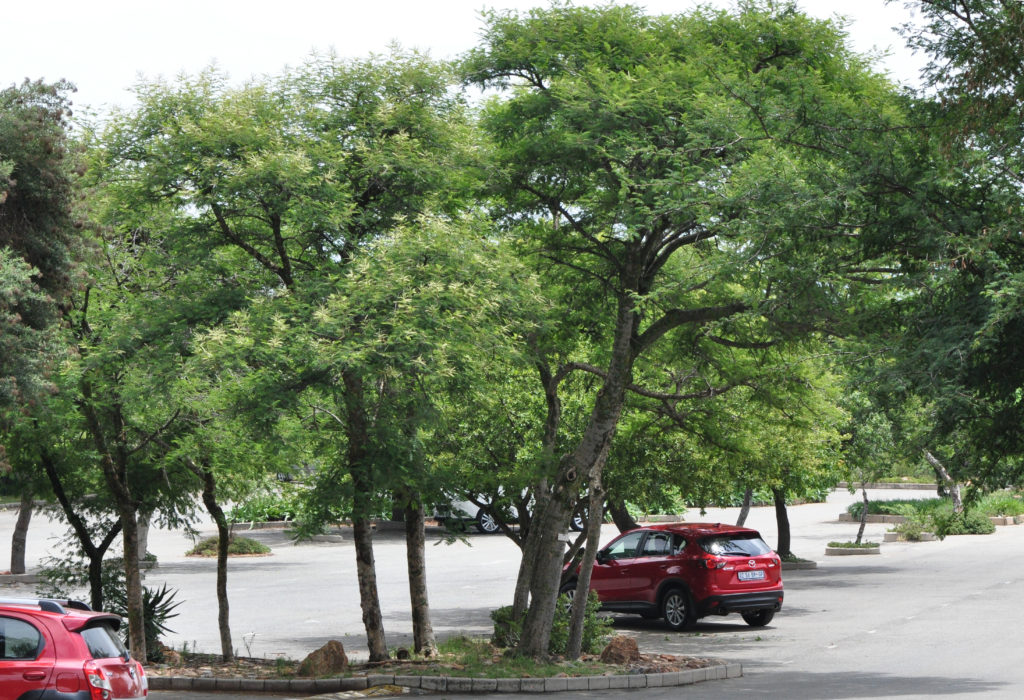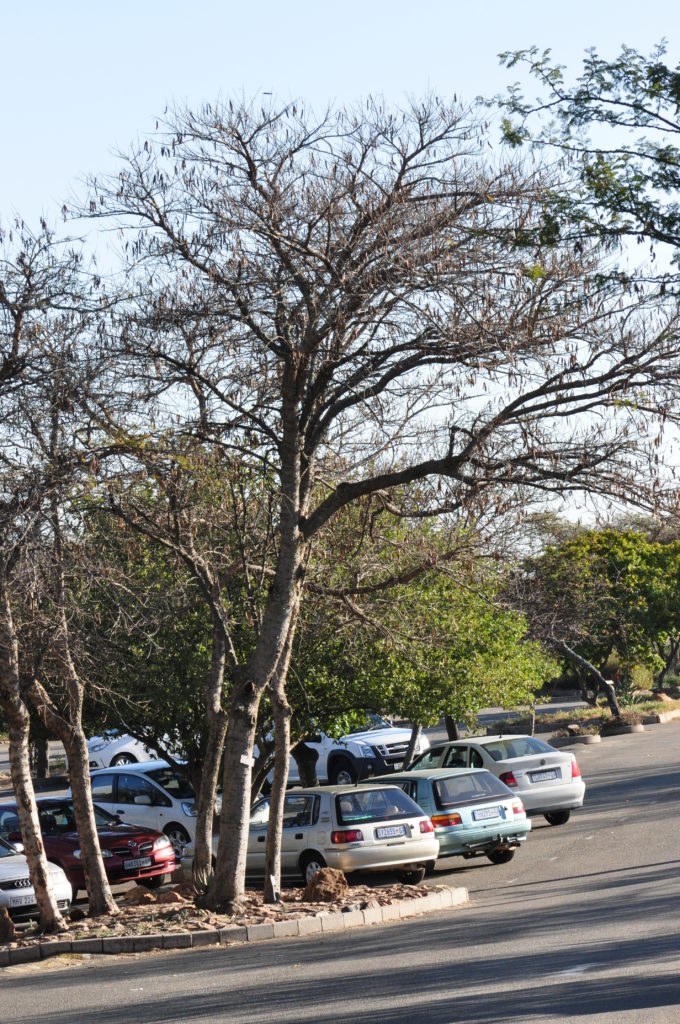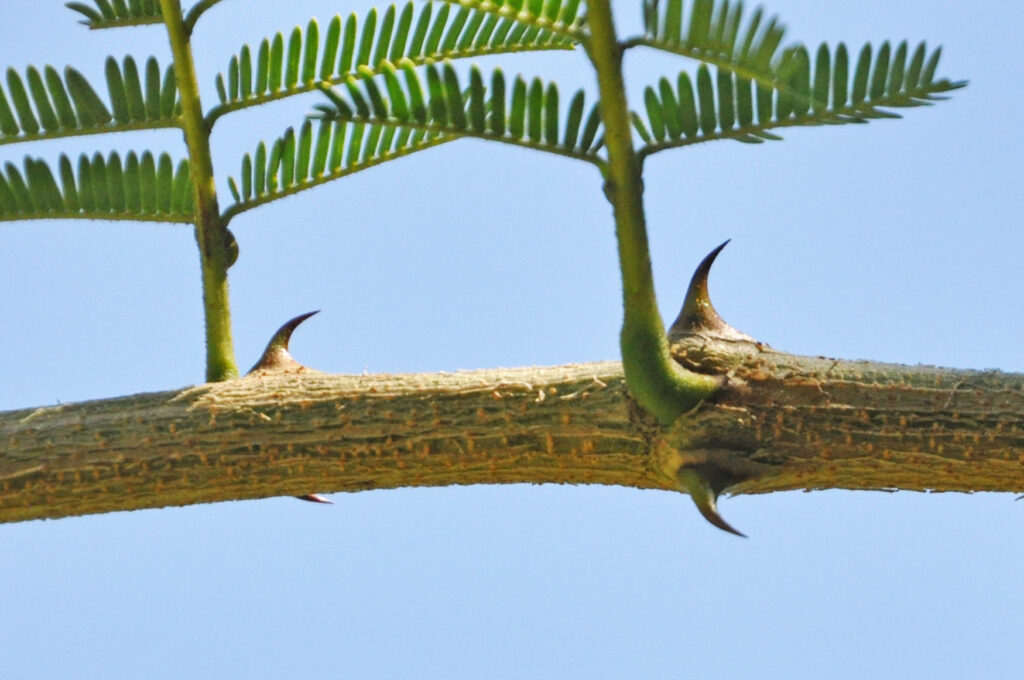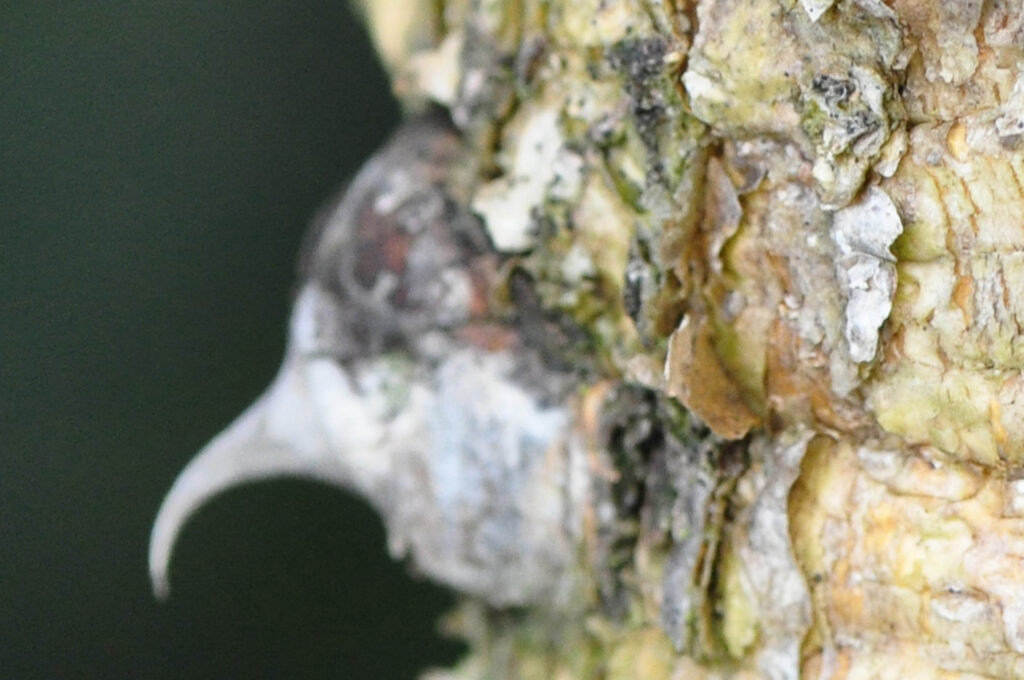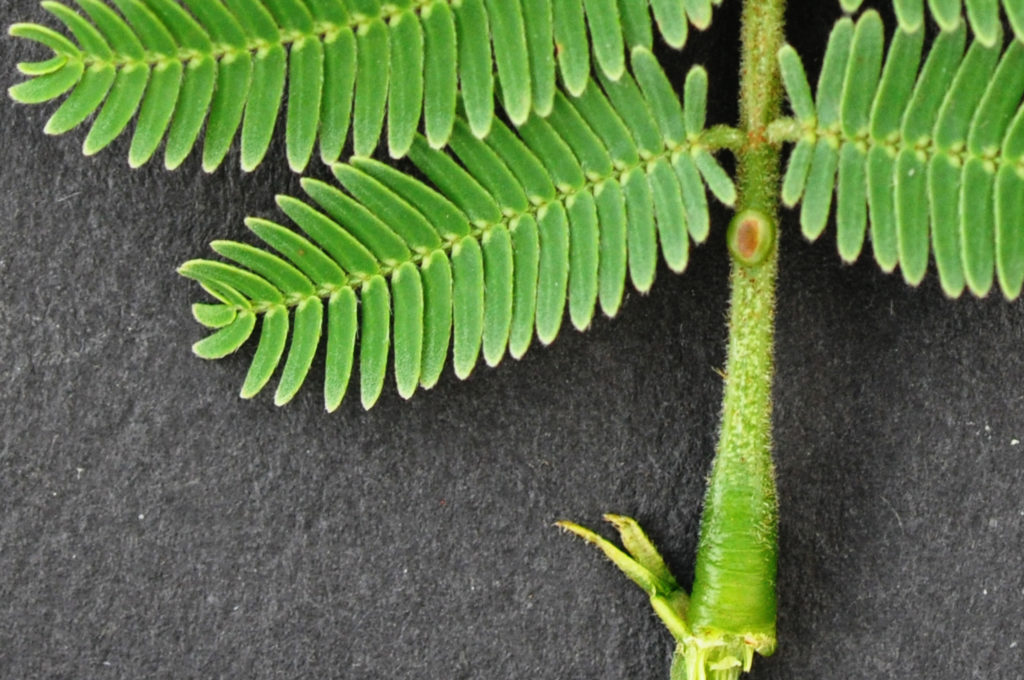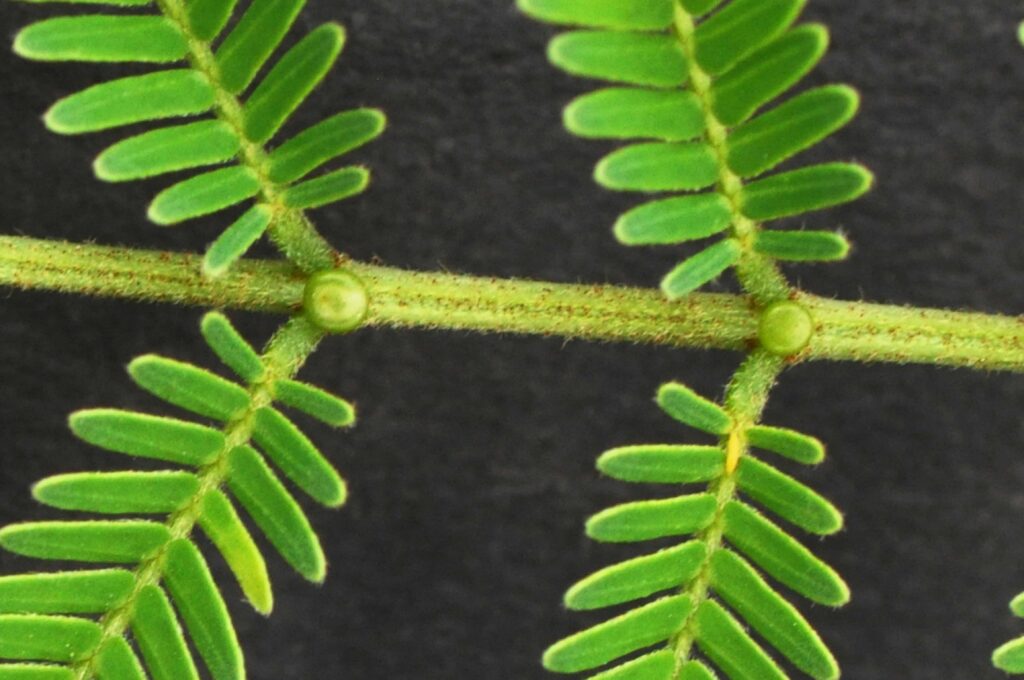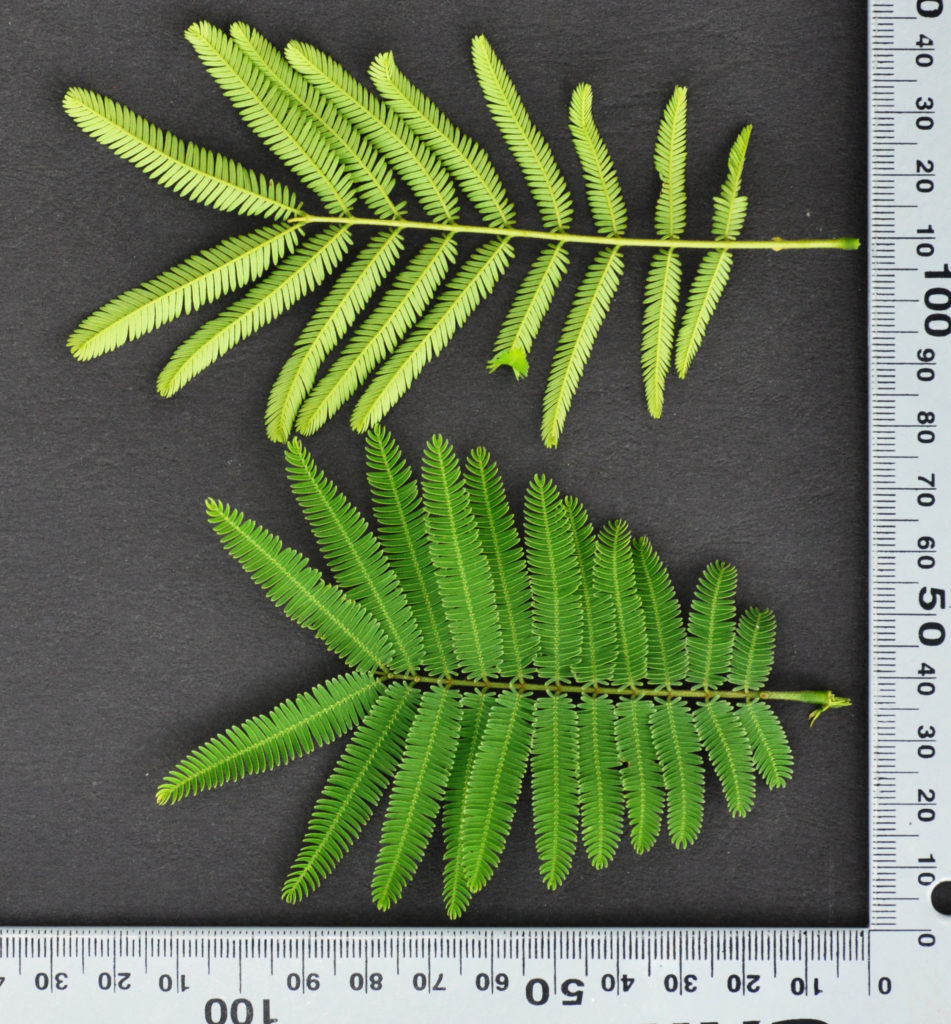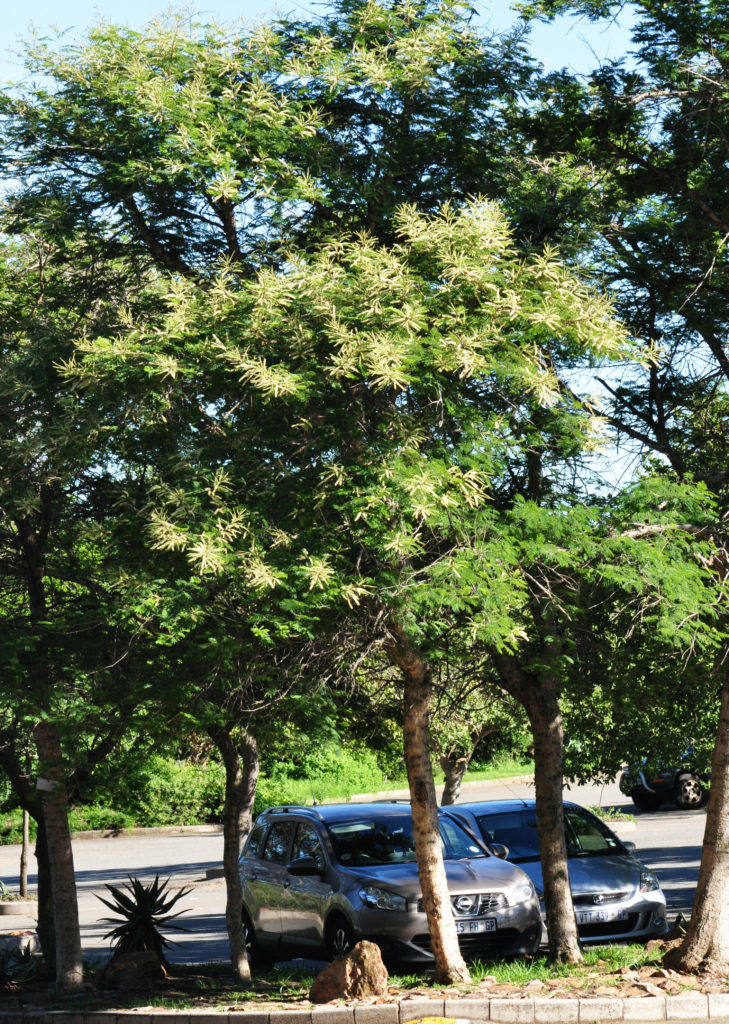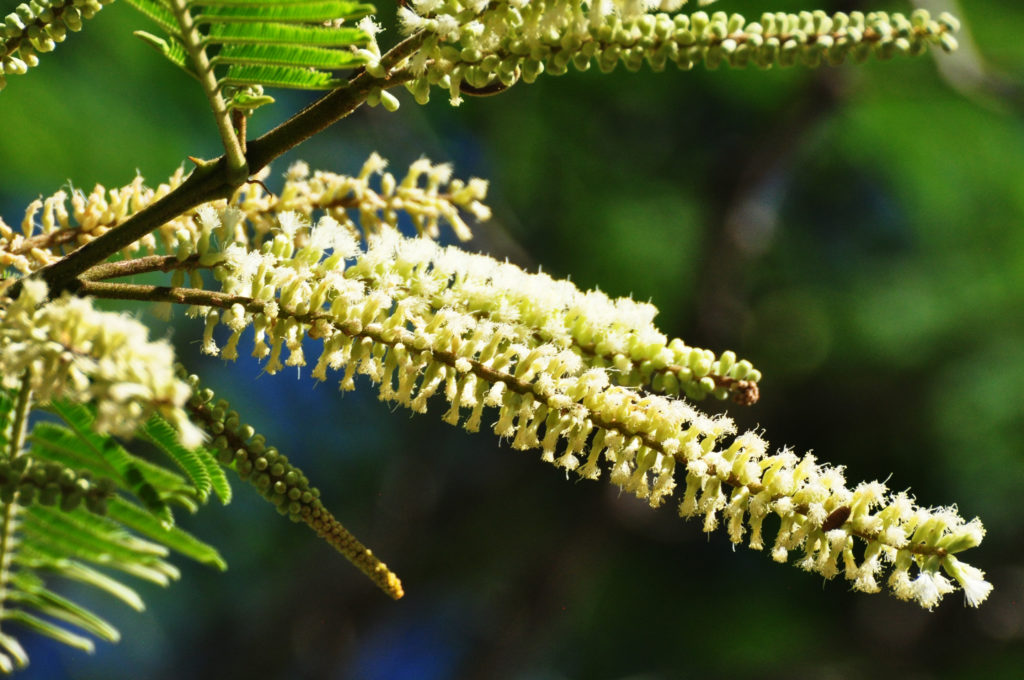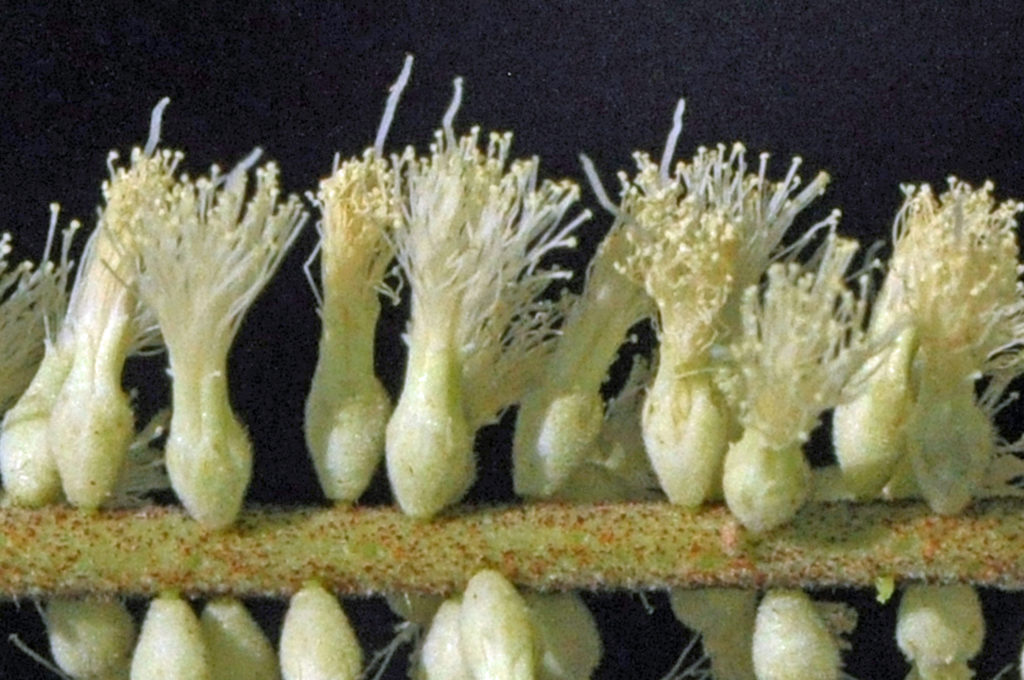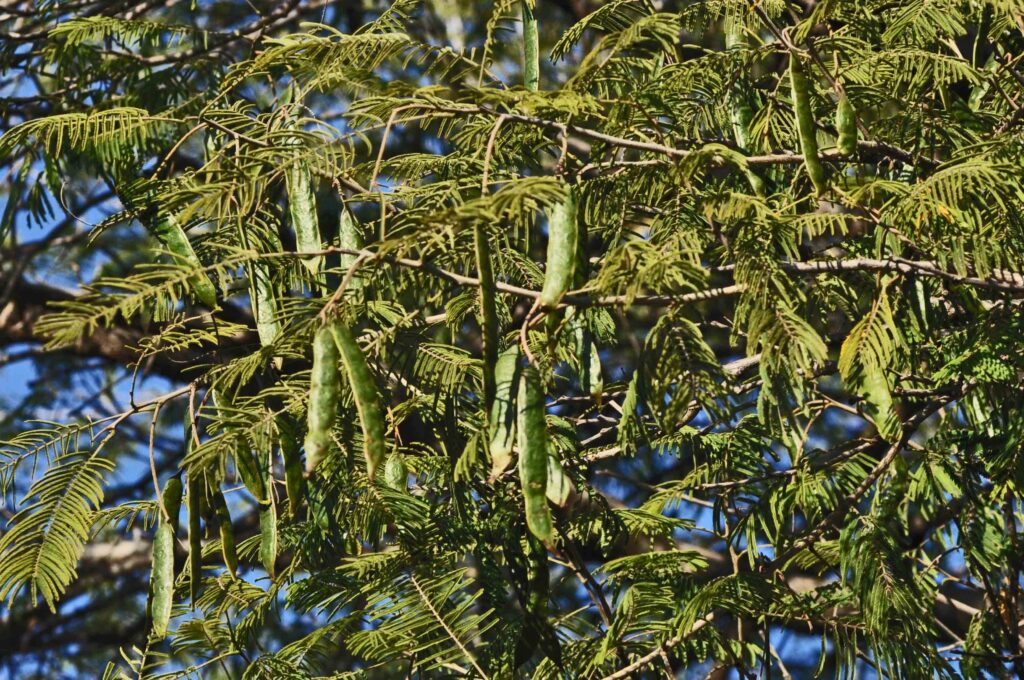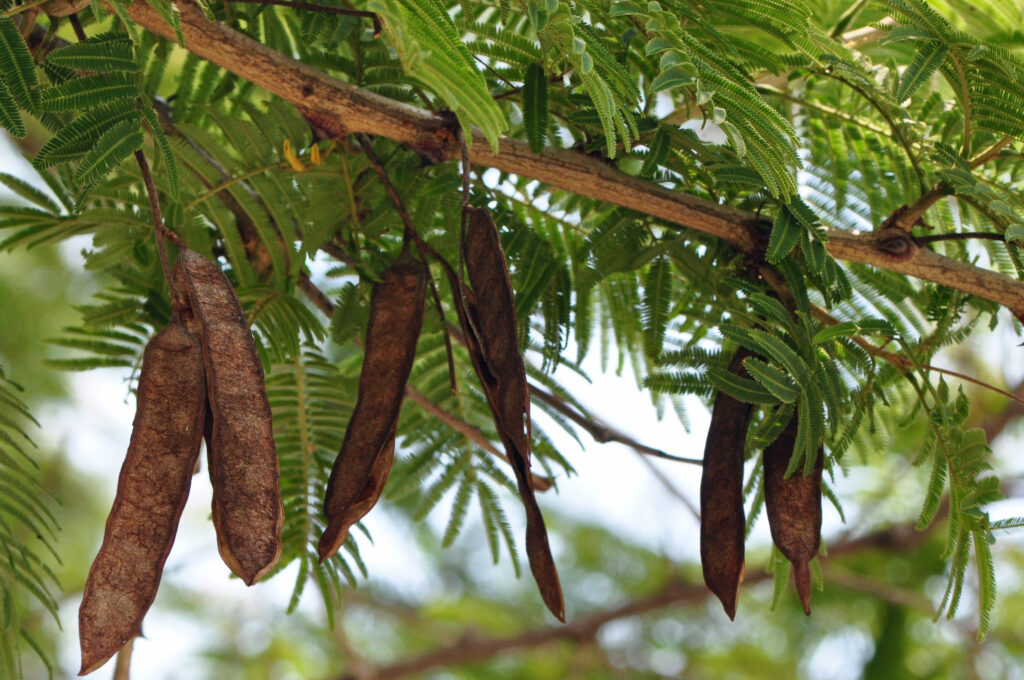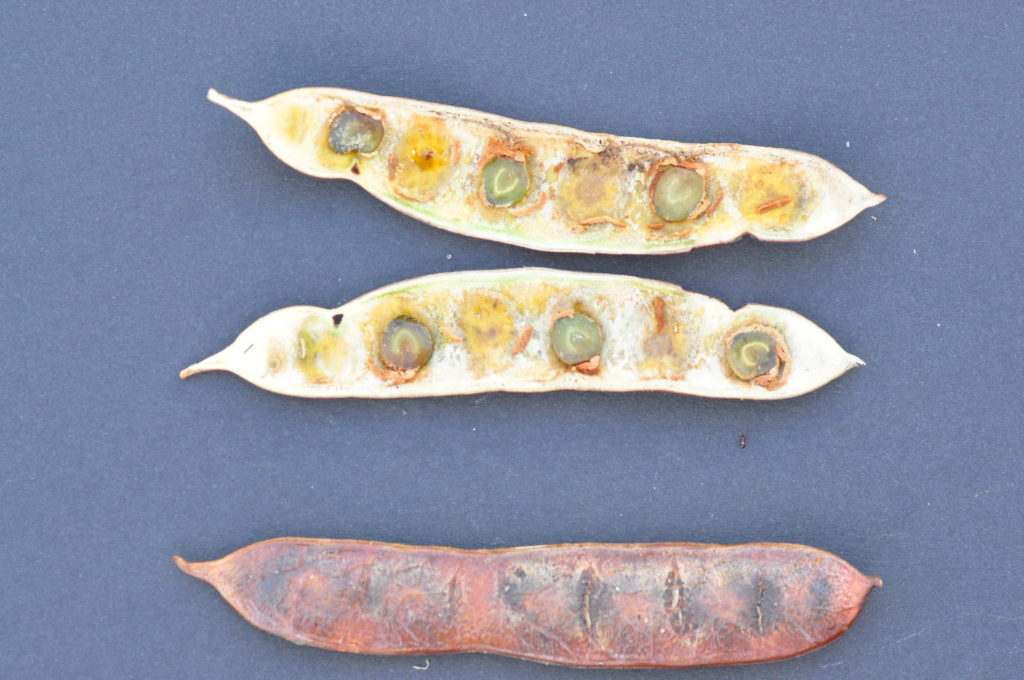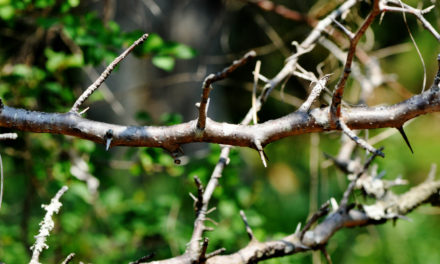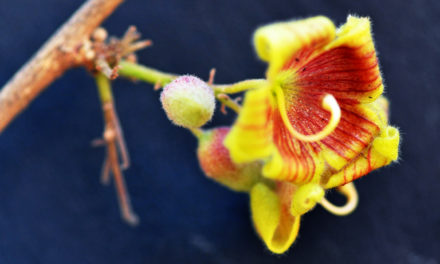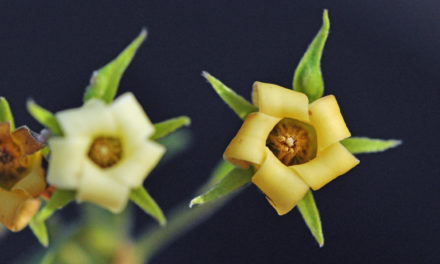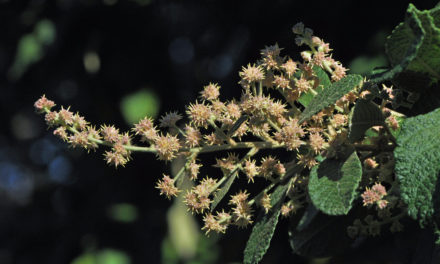General Info – summary
This impressive Tree is up to 20m high has light, pealing bark and single cushioned down pointing thorns. Whitish branches have paired, hooked thorns. Bipinnate Leaves have non-spinescent stipules & the petiole has a distinctive gland. Small, regular, bisexual Flowers in elongated spikes + whitish, colour with exserted filaments. Female ha a: superior ovary + extending style. Hairless Fruit: a dehiscent pod.
Description
Senegalia polyacantha subsp. campylacantha
Previous Names: Acacia polyacantha subsp. campylacantha, Acacia campylacantha, Acacia catechu.
SA Tree No. 180.
Common names: (Afr) Witdoring, Witstam-doring, Witstamdoring. (Eng) White Thorn, White-stem Thorn, White-stemmed Thorn. (Northern Sotho) Mooka, Mphoka-magwa. (Tshivenda) Tshikwalo. (Xitsonga) Xigatlu, Nkowakowa.
Fabaceae, or Leguminosae (Pea, bean or legume family). After the Orchidaceae and the Asteraceae, the Fabaceae is the third largest Angiosperm (flowering plants) family with 700+ genera and close to 20 000 species. Local Tree genera on this website include Acacia (Vauchellia, Senegalia), Albizia, Bauhinia, Bolusanthus, Burkea, Calpurnia, Colophospermum, Cordyla, Cyclopia, Dichrostachys, Erythrina, Erythrophleum, Faidherbia, Indigofera, Mundulea, Peltophorum, Philenoptera, Piliostigma, Schotia and Xanthocercis. The Fabaceae are recognisable by their fruit and by their pinnately compound Leaves. Leaves may also be simple – even bilobed and usually have stipules – some of which may be spinescent. Leaflets are usually entire. Flowers are bisexual and bracteate. Regular flowers usually have 4-5 sepals and the same number of petals. Irregular flowers have 4-5 sepals and 5 or less petals. Stamens have anthers that have 2 pollen sacs and there are usually at least twice the number of stamens as petals – often 10. The superior Ovary has one locule that may contain 1 or more ovules. The Stigma and Style are simple. The single carpel develops into the Fruit, which is usually a pod. This pod dehisces on both sides and may break into segments. Seeds vary.
Name derivation. Species of the genus Vachellia and Senegalia were considered members of the genus Acacia until 2005. New Names. The genus Vachellia was named after George H. Vachell (1789 – 1839), chaplain and plant collector in China. Here the inflorescence is capitate (head like) and spinescent stipules are present. Plants in the genus Senegalia – (from Senegal) usually do not have spinescent stipules and the inflorescence is usually a spike. polyacantha – many thorns. campylacantha – curved thorns.
Conservation: National Status: L C. (Least Concern). Assessment: 2005 (W. Foden and L. Potter).
Tree
This impressive, upright, often flat-topped Tree (photo 674) is up to 23m high. The relatively straight Trunk may reach a diameter of 0,6m. The thick, rough, pale yellowish Bark changes to grey as it ages (photo 639). It tends to be flaky or peels off in thick corky flakes and loose strips. The whitish Branches have a covering of white, silver hairs – hence the common name “white thorn”. This feature is most noticeable when the tree is leafless (photo 674). The branches that occur rather high up have strong widely spaced, brown or black, paired, hooked thorns that are up to 1,5cm long and occur just below branch nodes (photo 108). Single, persistent down pointing distinctly cushioned spines may also appear on the trunk (photo 496). Lenticels (a usually raised corky oval or elongated area on the plant that allows the uncontrolled interchange of gases with the environment) are present on young branches.
- 488. 2018/01/24. Walter Sisulu NBG. Photo: David Becking.
- 674. 2016/08/30. Walter Sisulu NBG. Photo: David Becking.
- 639. 2014/01/21. Walter Sisulu NBG. Photo: D Becking.
- 108. 2014/01/02. Walter Sisulu NBG. Photo: David Becking.
- 496. 2014/02/02. Walter Sisulu NBG. Photo: David Becking.
Leaves
This deciduous tree has bipinnate Leaves (Compound: twice-pinnate leaves. The Rachis (an extension of the Petiole – leaf stalk of a compound leaf that eventually bears the leaflets) has lateral pinnae “branches” not leaflets and the pinnules “leaflets” are on these “side branches”). Leaves are up to 24cm long. Each well-developed leaf has from 14 to 40 pairs of pinnae – each bearing from 20-60 pairs of opposite leaflets (pinnules). These tiny Leaflets are up to 5 x 1mm (usually smaller) and are a lighter green below (photo 680). The hairy Rachis (axis eventually bearing leaflets in this case) has a green grooved upper surface, and, towards the end of the leaf has glands between pinnae (photo 687). The hairy Petiolules (stalks of leaflets) are short (photos 687 & 683). The hairy Petiole (leaf stalk) is from 0,5 to 4cm long and has a wide base. On the upper side of the petiole (photo 683) is a conspicuous flat gland that is almost 3mm wide. It is just wider than the petiole and the centre of the gland may be red (photo 683) or brown. The linear Stipules (basal appendage of the petiole – photo 683) are not spinescent and soon shed.
- 683. 2014/11/18 . Walter Sisulu NBG. Photo: David Becking.
- 687. 2014/11/18. Walter Sisulu NBG. Photo: David Becking.
- 680. 2014/11/18. Walter Sisulu NBG. Photo: David Becking.
Flowers
Attractive Flowers appear together with the new leaves (photo 754). Most are bisexual and actinomorphic (Regular, symmetrical. Flowers are vertically divisible into similar halves by more than one plane passing through the axis). They develop at nodes in elongated Spikes (simple indeterminate inflorescences with sessile flowers on single unbranched stalks – photo 760). The spikes may reach 12 x 1,3cm. The Perianth (a collective term for the calyx and corolla) of individual flowers is small and light green or creamy white (photo 412). Here the Calyx is up to 2,5mm long and the Corolla is up to 3mm long.
A mass of Stamens is present. Each stamen has a white filament (stalk of the male reproductive structure that hold up the anthers) and a yellowish anther collectively giving the overall creamy white appearance to the flower. A mass of free exserted (sticking out) Filaments (are stalks that are part of the male reproductive structure that hold up the anthers) protrude beyond the corolla (photo 412). There is single Pistil (the female element of the flower composed of the ovary, style and stigma) and the single, thin white Style eventually elongates from the superior ovary and extends beyond the Anthers (photo 412). It ends in a small, single, concave Stigma, which becomes receptive after the plants own pollen is shed. This procedure helps to prevent self-pollination. (Sep-Dec).
- 754. 2014/12/30. Walter Sisulu NBG. Photo: David Becking.
- 760. 2014/12/30. Walter Sisulu NBG. Photo: David Becking.
- 412. 2016/12/22. Walter Sisulu NBG. Photo: David Becking.
Fruit
The initially green, pendulous (photo 95) Fruit is a Pod that become light brown to reddish and up to 15 x 2cm. Pods are hairless, straight, flat, coriaceous (leathery), dehiscent and much lined. The pods taper towards both ends (photo 42) and slightly constricted between seeds (photos 95 & 641). Each hairless pod contains from 3 to 10 slightly flattened Seeds with horseshoe markings (photo 42). (Mar-Oct+).
- 95. 2016/05/31. Walter Sisulu NBG. Photo: David Becking.
- 641. 2014/01/21. Walter Sisulu NBG. Photo: David Becking.
- 42. 2014/09/30. Walter Sisulu NBG. Photo: David Becking.
Distribution & Ecology
Only subsp. campylacantha occurs in Africa. These Trees grow in deep, relatively moist soils or alluvial soils near rivers, in thorn veld, subtropical bushveld and open parkland. They can survive both dry weather and low temperatures. This tree is found in Limpopo and Mpumalanga e.g. in Northern Kruger National Park – Punda Maria and Pafuri areas. Beyond South Africa, it occurs in central and northern Mozambique and as far north as Gambia and Ethiopia. The tree Roots have compounds that repel animals e.g. rats, snakes and crocodiles. The leaves allow sunlight penetration and thus grass can grow underneath the trees. Larvae of the scarlet Butterfly Axiocerses tjoane feed on the Leaves. These butterflies are located in eastern and southern Africa. Larvae of the Crawshay’s Hairtail butterfly (Anthene crawshayi) feed on young terminal Shoots. The Speckled Emperor Moth (Gynanisa maia) have larvae that feed on the leaves of this plant and on leaves of Mopane and Combretum. These moths occur from South Africa to eastern Africa. Another associated moth is the African Wild silk Moth (Gonometa postica). This silk producing moth has larvae that feed on the leaves on this and other members of the Fabaceae (the legume family).
Ethnobotany
The strong Wood is termite resistant and is used in local medicine. The heartwood is dark brown, but the coarse-grained wood is not much used. The Bark can be used for tanning leather. The Gum (a water-soluble sugary polysaccharide that is exuded to seal wounds and prevent infection by bacteria and fungi and helps prevent trees from freezing) can be used as glue and in confectionary. The African wild silk moth Gonometa postica has an edible pupa. Silk can be harvested from their tough cocoons. When filled with things like small shells, these cocoons can be used as ankle rattles. This fast-growing tree is easily raised from Seed but needs to be protected from frost for the first year or two. This attractive tree is not for small gardens. It has invasive Roots and should be kept away from buildings. Fresh roots have a strong odour. They are used in local medicine and for magical purposes.
References
Burrows, J.E., Burrows, S.M., Lotter, M.C. & Schmidt, E. 2018. Trees and Shrubs Mozambique. Publishing Print Matters (Pty) Ltd. Noordhoek, Cape Town.
Coates Palgrave, M. 2002. Keith Coates Palgrave Trees of Southern Africa, edn 3. Struik, Cape Town.
Foden, W. & Potter, L. 2005. Senegalia polyacantha (Willd.) Seigler & Ebinger subsp. campylacantha (Hochst. ex A.Rich.) Kyal. & Boatwr. National Assessment: Red List of South African Plants version 2020.1. Accessed on 2023/12/28.
Lawrence, G. H. M, 1951. Taxonomy of Vascular Plants. The Macmillan Company, New York. Tenth Printing 1965.
Ross, J. H. A conspectus of the African Acacia Species. 1979. Botanical Research Institute.
Palmer, E. & Pitman, N. 1972. Trees of southern Africa. Balkema, Amsterdam, Cape Town.
Schmidt, S. Lotter, M. & McCleland, W. 2002. Trees and Shrubs of Mpumalanga and the Kruger National Park. Jacana, Johannesburg.
van Wyk, B. & van Wyk, P. 1997 Field guide to Trees of Southern Africa. Struik, Cape Town.
https://en.wikipedia.org/wiki/Senegalia_polyacantha
http://www.zimbabweflora.co.zw/speciesdata/insect-display.php?insect_species_id=400480
http://www.plantbook.co.za/senegalia-polyacantha/
https://en.wikipedia.org/wiki/Anthene_crawshayi
http://pza.sanbi.org/senegalia-polyacantha-subsp-campylacantha
http://waynesword.palomar.edu/plaug99.htm
http://posa.sanbi.org/flora/browse.php?src=SP
https://www.sanbi.org/animal-of-the-week/african-silk-moth/
https://en.wikipedia.org/wiki/Gonometa_postica
https://www.aminart.co.uk

